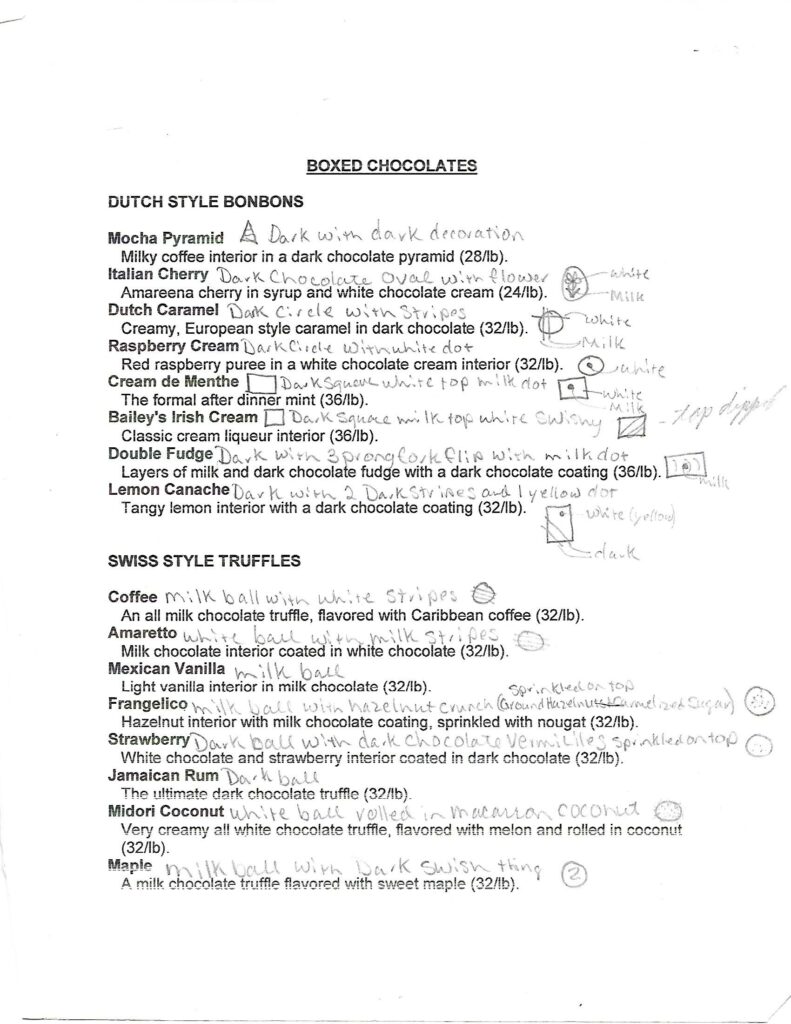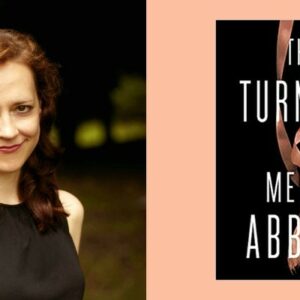CrimeReads asked me to write a post, and as soon as I read the suggested title, I went to the corner drugstore and bought two nine-ounce packages of Coffee Nut M&Ms. I needed inspiration.
There are such a lot of ways to eat chocolate. I should know. I was born loving chocolate. And, like every author, I was a reader before I was a writer, and I loved stories before I could read them.
My mother used to tell the following one.
“When she was around three, JoAnna’s special treat was chocolate milk, which she called ‘choc.’ One afternoon, I was reading, and she came to me and asked for ‘choc.’ And I answered, ‘As soon as I finish my chapter.’
“And she said, ‘When I ask for choc,’ you always say, ‘as soon as I finish my chapter.’”
My mother always laughed at that point, but I think she was a little embarrassed. I’ve never understood why she should feel that way. I had apparently learned to link chocolate with reading before I could read at all. And there’s no reason people can’t have both pleasures. Eating chocolate and reading mysteries are both parts of the ideal world. I’m extremely grateful that my mother loved to read, loved to read mysteries, and also loved chocolate.
I still like chocolate milk, but maybe not as much as I like Coffee Nut M&Ms. I’m certainly not recommending either of those particular chocolate treats for all writers or readers.
Since I write about high-priced, elegant chocolates, I suppose I ought to emphasize the snazzier ones, the ones nibbled by the characters in my books, the Chocoholic Mysteries. And I do love those, too. However, the mid-sized city I live in doesn’t contain a fancy chocolate shop. When I long for an elegant chocolate, I either have to order it or drive a hundred miles. This is inconvenient and expensive. So, I fall back on the candy aisle in the local drugstore and on mass market chocolates. I make out fine.
M&Ms, in all flavors, are ideal for eating in awkward places. These include in cars, at the computer, or when reading. So, I often rely on them for inspiration. I can nibble, lick my fingers, and rub any stickiness off on the old jeans that are my usual writing garb. As the ads say, “They melt in your mouth, not your hand.”
I started writing the Chocoholic Mysteries because my daughter Betsy—when fresh out of college—got a job in the business office of a company which made fancy European-style chocolates.
The whole family was thrilled with the idea of having a relative with an “in” to the chocolate world. Her new boss, she reported, had asked her if her family now wanted chocolates. She assured him that we all did.
He answered, “Send’em a price list.”
She’d been at the company about a year when my editor asked me to write “something cozy,” and I realized there was nothing in the world cozier than chocolate. When Betsy’s boss assured her that he didn’t object to her helping me with background information, and even offered to help me himself, I jumped right into the chocolate pot, so to speak. I had found a fictional home, and the 18th book in the Chocoholic series, The Chocolate Raccoon Rigmarole, is out this month.
One of the most valuable research tools my daughter provided me was simply a list prepared for their customers, describing their company’s bonbons and truffles—complete with descriptions of the appearance and flavors of each goodie. She added a hand-drawn picture of the designs on the top of each—such as a flower, or diagonal stripes, or “dark circle with white dot.”

I have used this crib sheet for nearly twenty years. On it, for example, a Mocha Pyramid bonbon is, “Milky chocolate interior in a dark chocolate pyramid.” Betsy’s personalized description of its appearance, scrawled in the margin to help her writer mom, is, “Dark with dark decoration.” Beside it is a rough drawing of a triangle with a squiggle inside.
The reader (or eater) must understand that “dark” means “dark chocolate;’ “milk” translates to “milk chocolate,” and “white,” naturally, means “white chocolate.” In a year Betsy had become aware of some of the nomenclature of the chocolate world.
(I love that list, and I still use it to describe chocolates in every book. Incidentally, that company no longer exists, and today Betsy is an executive with a major chain of chicken wing restaurants, so I’m leaving out the name of the firm, as well as her married name. I’m proud to say I have two additional talented and accomplished children, but neither has ever been involved with chocolates professionally.)
But which chocolates might appeal to which detectives? That’s up to me, the writer. I may rely on Betsy’s list for inspiration, but I’m not tied to it. If I want to add Michigan peach jam or champagne or Basalmic vinegar with hints of honey to my fictional chocolate, I do it.
The detective in the Chocoholic books, Lee McKinney Woodyard, likes all her company’s chocolates, of course, but her favorite is Dutch Caramel. That’s easy for me to remember, because it’s my favorite, too. Betsy’s sheet describes it as, “Creamy, European-style caramel in dark chocolate.” Her little drawing of it shows it as a round bonbon with three stipes: two vertical and one horizonal. I’m salivating at the thought.
How about my favorite childhood detective, Nancy Drew? As a teen-ager, Nancy would probably go for any flavor, as long as it came in a heart-shaped box. For her I’d pick an Amaretto Truffle. The list designed for the customer describes this as, “Milk chocolate interior coated in white chocolate.” Betsy’s penciled description is, “white ball with milk stripes.” Since Amaretto is an almond-flavored liqueur, a teen might be thrilled by the worldly hint of alcohol. By the time they’re served up, however, these liqueur-flavored chocolates are non-alcoholic.
What type of truffle or bonbon might appeal to Agatha Christie’s spinster detective Miss Marple? Marple sounds similar to Maple. Maple is my least favorite chocolate, but Betsy gave its appearance my favorite description. She called it, “A milk ball with dark swish thing.” To me maple flavor is delicious only in syrup, but the “swish thing” intrigues me. Miss Marple might well like it. Or at least decode it.
Rex Stout’s classic private eye, Nero Wolfe, goes for highly-spiced food; would he like a Powerful Pepper filling? I invented that one, but several companies do offer a pepper-flavored truffle or bonbon. Or would C.J. Box’s outdoorsman Joe Picket go for chocolate-covered bacon? Those are available in real life, too.
How about Mickey Haller, “The Lincoln Lawyer” created by Michael Connelly? Maybe he’d like a Lemon Canache bonbon. The list describes it as, “Tangy lemon interior with dark chocolate coating.” Betsy’s description adds, “Dark with 2 dark stripes and 1 yellow dot.”
Donald Westlake? Dortmunger might have bought a box of Jamaican Rum truffles for his girlfriend May. On the list that’s, “The ultimate dark chocolate truffle,” described as a plain “Dark ball.”
But I’m stumped by one of my favorite detectives—brilliant banker John Putnam Thatcher, created by Emma Latham. Thatcher, one of the most powerful international bankers in the fictional world, never seems to eat anything but a small steak with a baked potato. Sherlock Holmes is tough, too. Perhaps he’d like a Coffee Truffle. “An all-milk chocolate truffle, flavored with Caribbean coffee.” Betsy described it as, “Milk ball with white stripes.”
As for what sort of chocolate individual mystery readers should go for, I’ll let them make their own decisions. I’m too busy with my M&Ms.
***


















